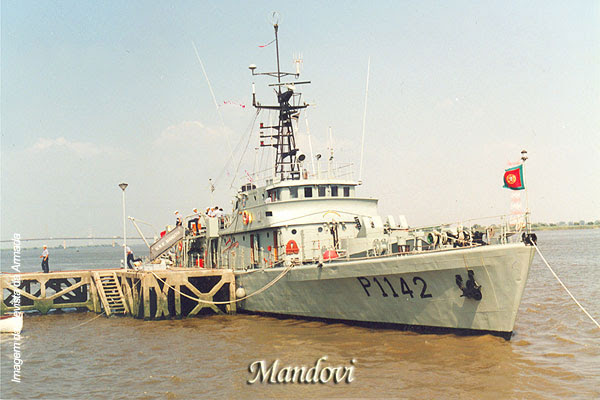Since the 40's that Portuguese Navy uses the 40 mm Bofors Gun in their ships, first has a anti-aircraft gun (AA) in Frigates and Corvettes, but in the Colonial War the 40mm caliber started to be used as the main gun in patrol and landing craft ships (the gun substitute the Oerlinkon 20mm). After the war, 40 mm was used in the new OPV from Viana do Castelo class but only for a short time, since was substituted in a par of years for the 30 mm Marlin (3 millions each), operated with remote control from the main bridge. But when Portugal brought from Denmark the ancient SF300 class, the ships came without the main gun, and the solution was only to put a manual 0.50 caliber with two sailors operating the gun, because there's no money for more. Since the Navy has a lot of 40 mm Bofors from for example Cacine class (and others who are not more in service), a cheap way to resolve the problem and at the same time have a good firepower could be modernize the weapon with a kit (or more) that transforms the ancient wepon in a full automatic gun with auto loader and a coverture against the weather. Let´s see how (special atention to the 2 PDF links, who explain all the process in detail).
 |
| Fig.1- Bofors 40mm L70 with a coverture to protect the gun from the weather conditions. This is a upgrade since that the original model his opened. |
 |
| F.2 - The 40 mm Bofors is still produce. This is the most modern Mk4 version by BAE Systems. |
 |
| Fig.3- The auto loader inside the weapon. Old models could receve an auto-loader only a little different from this one. |
 |
| Fig.4 - The CDU view in the main gun. The weapon can be controlled also from the bridge if the client request to do so. The L70 model could receive a similar system. |
 |
| Fig.5 - The land model use by Indian Army modernized. We can see the digital console at left. This is a modernizations that could be done in most of the least models of the gun. |
 |
| Fig. 6 - A Cacine Patrol ship in the bigining of his carrier. The main guns are 2 Bofors 40mm. Today only a few are in service. |
 |
| Fig.7 - A landing craf in an African river. They were armed also with two 40 mm Bofors Guns. |
 |
| Fig. 8- Bofors 40mm gun in a portuguese corvete (Baptista de Andrade). Today only two ships from a total of eight are in service. |
 |
| Fig.9 - A Closer vew of the gun at a Landin Craft during the Colonial war, somewere in a river. |
 |
| Fig.10 - Another Patrol Ship in a African River , during a real fire situation. The problem with this model was that was not auto, so needed a crew of 3 or 4 sailors. |
 |
| Fig. 11- One of the first modernization of the 40 mm bofors was this radar adiction to the main gun. |
 |
| Fig. 12 - Another modernization was this night system. We can see all the manual stuff still present is this version. |
 |
| Fig. 13 - Viana do Castelo OPV were initially armed with a slight modernizations of the bofors 40 mm. All the system was electrified só de crew only had to put the munition and fire the gun. |
 |
| Fig.14 - A modernized L70 model in tha brazilian navy. Some navies like the Finland and Norway have modernized the weapon to put in torpedo and patrol boats. Others they prefered to buy the new Mk4 model made by BAE. |




